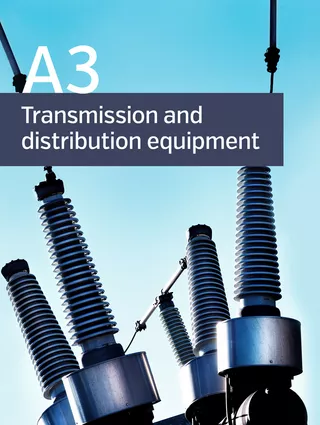Summary
DC systems have been used for certain applications in the past. Compared to AC, DC systems have a better transfer capacity, improved flexibility, and controllability, and are able to provide better power supply reliability. DC power brings a strong set of attributes for the grids and its challenges, including lower distribution losses and higher power carrying capacity.
DC has already been used for a long time in HV. HVDC systems are used to bridge long distances exceeding the physical limit of AC transmission or link systems of conflicting parameters.
Most use of DC is on LV level as electronics applications operate at this voltage level. It applies to both loads and generation. Typical examples for loads are computer and control, converter driven motors and machinery, audio, and video equipment as well as modern lighting based on LED technology.
The MV level or distribution grids with voltages between 1.5 kV and 52 kV were hardly using DC in the past. Exceptions are converter-based network links, typically as point-to-point connection to bridge some distances or two networks of different parameters.
Medium voltage DC distribution networks have obvious advantages over traditional AC networks in renewable energy grid connection, system capacity improvement, flexible power flow control and system stability improvement. With the increasing maturity of DC circuit-breaker, converter station, DC transformer and other key technologies, DC distribution network has gradually become a promising solution for the development of smart grid in the future.
The Working Group collected available experience of MVDC switching equipment used in different applications and investigate the technical requirements and testing experience.
MVDC distribution systems are expected to facilitate a growing number of distributed renewable energy sources, which require power electronics interfaces, and a growing number of DC loads. MVDC systems are envisaged to collect power from renewable resources and to distribute power to DC loads such as hydrogen, power-to-gas, high power charging and energy storage systems. In addition to the direct connections, MVDC distribution systems are envisaged to take on more significant duties
One technical hurdle is the switching principle: In AC networks, electricity alternates direction periodically, naturally providing a "zero crossing" which allows electrical faults to easily be extinguished. DC networks, on the other hand, deliver power without zero crossings, making it impossible for most existing solutions to interrupt the DC current. Technical solutions exist, but they are more expensive and more difficult to control.
A second issue is the lack of standardisation. This results in a situation that most applications today have different parameters due to the lack of common preferred ratings. Testing is different as well: reference is taken to comparable AC equipment but direct transfer to DC is limited as a DC system reacts different to an AC system.
A third aspect would be safety measures. The most typical example here is the easy plug for LVAC, which would create large arc when unplugging the same way in a DC grid. The different behaviour of DC arc needs to be considered in several standards for operation, interaction with other network parameters and protective measures like internal arc treatment.
The challenges of today’s power grids and the need for more energy efficient operation leads to emerging MVDC applications. This Technical Brochure describes potential use cases and applications of MVDC in networks. Some of them are already apparent and widely discussed in the industry while others are expected to become relevant in future, waiting for more technical solutions becoming available. Another chapter details projects and installations using MVDC.
This Technical Brochure describes potential use cases and applications of MVDC in networks. Focus is given on projects with switching equipment involved and on the different switching equipment for DC networks. These considerations are accomplished with experience from testing DC switching equipment, both in field and test laboratories. Especially based on laboratory experience, recommendations are given for ratings and topics to be considered for future test specification and standardisation.
C. HEINRICH, Convenor (DE), T. MIYAMOTO, Secretary (JP)
L. ÄNGQUIST(SW), N.A. BELDA(NL), G. DE CARNE( DE), D. DESMOND(US), X. GODECHOT(FR), P. HOCK (DE), C. KRUSCHA (DE), N. LANGENBERG (DE), Z. Liu (CN), M. MANZUK (RU), H. MENNE (CH), A. MOKHBERDORAN (PT), P. NOVAK (DE), M. RIVA (IT), J. SIM (KO) T. SOMMERER (US), D.WILHELM (DE), Y. WU (CN)
Additional informations
| Publication type | Technical Brochures |
|---|---|
| Reference | 931 |
| Publication year | 2024 |
| Publisher | CIGRE |
| ISBN | 978-2-85873-636-2 |
| Study committees | Transmission & distribution equipment (A3) |
| Working groups | WG A3.40 |
| File size | 10 MB |
| Pages number | 144 |
| Price for non member | 260 € |
| Price for member | Free |
Keywords
MVDC, DC, DC networks, switching equipment, DC circuit-breaker, MVDC circuit-breaker, MVDC projects, Hybrid circuit-breaker, Distribution grid, medium voltage DC, MVDC switching equipment, collector grids, solid state switch, current limiting switch, Multi-terminal DC, Commutation branch, Counter voltage, HVDC



